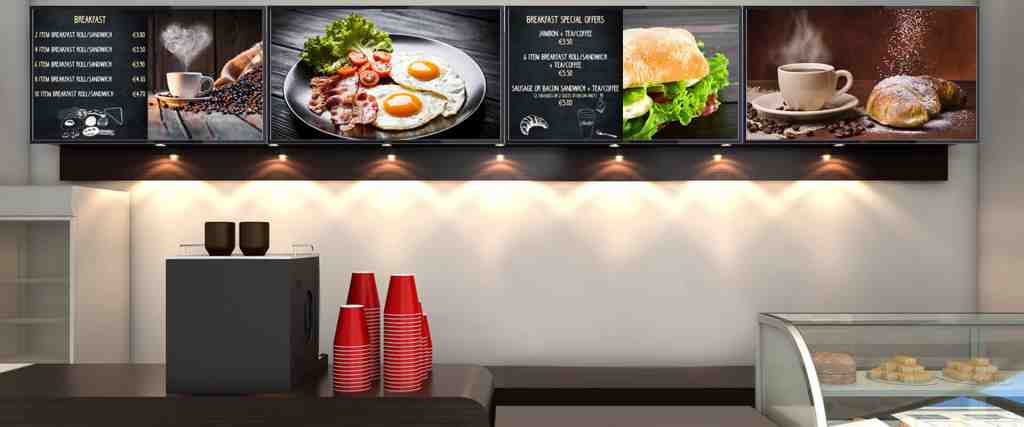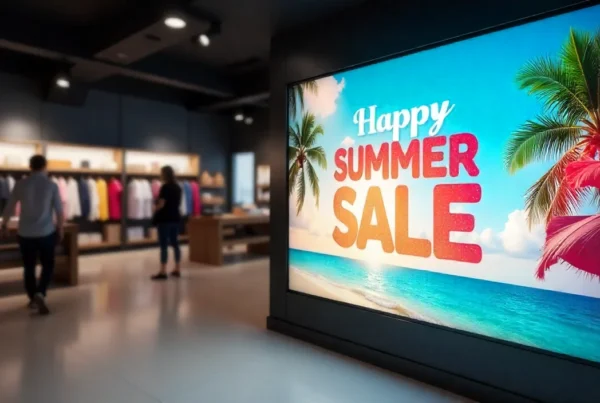With the fast-paced world and technological advancements, dining is no more restricted to just food; it covers all, from ambiance to services and how the menu presentation is being done. Nowadays, digital menu boards are extensively being replaced with conventional paper menus, providing a dynamic and interactive way to deal with customers. Digital menu boards are not just about menu items on a screen but are very powerful tools in creating customer experiences, sales lifts, and presenting a modern image to the brand. Here are some ideas for you to get the most out of your digital menu boards.
Dynamic Content, Updated in Real Time
One of the biggest advantages of having a digital menu board is that content can be updated in real time to keep it relevant. In many ways, this applies to keeping the menu fresh and interesting. For example, restaurants can update their boards to indicate daily specials, seasonal items, or items on limited-time offers. If a dish sells out, it can be immediately pulled or replaced with another item so that customers are not disappointed. Another advantage is that updating in real time will enable price changes to happen instantly and can be particularly handy for goods with fluctuating costs, such as seafood.
High-Quality Visuals and Videos
A picture is worth a thousand words, and in the culinary world, visuals are very important to draw customers. High-resolution images of menu items—ones that make them look as tasty as they really are—must be well thought out while designing digital menu boards. Short videos on the preparation or sourcing of the dish can further create a connection with the food, thus bringing more entertainment to the dining experience. Such images can also be used to highlight how fresh the ingredients are or how much work goes into every single dish that is prepared.
Interactive Menus
Interactive features of any kind can greatly improve the experience for the consumer. For example, the interactive features of digital menu boards might allow the consumer to further drill down into menu categories. This may be quite helpful to a consumer on a restricted diet looking for vegetarian, vegan, gluten-free, or some other specialty category. Interactive menus also allow for a level of description that can go down to the nutritional value or perhaps even suggest wine pairings and complementary side dishes to further supplement the whole dining experience.
Personalized Customer Experiences
Through the use of customer data, it can be possible to personalize the dining experience and gain a competitive edge. Digital menu boards can be set up to recognize returning customers and suggest their favorite dishes or new orders based on previous selections. This level of personalization is likely to increase customer loyalty and satisfaction. For example, a welcome message could appear with the customer’s name, followed by recommendations for dishes they haven’t tried yet but are likely to enjoy based on their preferences. This creates a warm and tailored experience.
Promotions and Upselling
Digital menu boards are great tools for showcasing promotions and upselling items in restaurants. A restaurant can use these boards to highlight special offers, combo deals, or new menu items. By strategically placing promotions on the menu board—whether in a rotating banner or a brightly colored box—customers are more likely to notice and be tempted by these deals. Additionally, upselling can be encouraged by suggesting add-ons, such as extra toppings, sides, or drinks, which can be easily integrated into the menu as the customer browses through options.
Themed and Seasonal Menus
Digital menu boards allow for content to be changed depending on the theme or season for example. For example, in the course of a particular season such as the festive season, the menu board might be designed to have a festive look and feel with related items of food and beverage. The restaurant can also change its theme every month, for instance, having a ‘Summer BBQ’ or ‘Italian Feast,’ with the digital menu board displaying the dishes and drinks for the theme. This not only makes the dining experience new and interesting for the returning customers but also provides marketing strategies such as social media and offers.
Social Media Integration
The use of social media platforms in digital menu boards is a good way to interact with the customers especially the young ones. Restaurants can have live social media feeds that can show the reviews, pictures, or tweets by the customers of the restaurant. Asking the customers to tag the restaurant or use a particular hashtag will help in improving the visibility of the restaurant online and also make the customers feel that they are part of a group. Also, the positive customer-generated content can be displayed on the menu board as a way of encouraging other customers to make similar choices.
Event and Entertainment Integration
For restaurants that have events or entertainers, digital menu boards can be of benefit in two ways. Besides, the screens can be used to offer the menu items and inform the audience about the upcoming events, live music, or other special occasions. This can increase the number of people coming into the restaurant and make the place more spirited. For instance, a restaurant that is having a wine tasting event can also use the digital menu board to show the wines that are available and the notes that are on them as well as the background information about the vineyard.
Multilingual Menus
It is important to address the needs of the diverse customers and digital menu boards are a great way of addressing this by translating. Customers are able to choose their preferred language, and the menu will be translated into the desired language for the ease of the customers. This feature is especially helpful in the areas with many tourists or in the multicultural districts. Having menus in different languages is beneficial in improving the satisfaction of the customers and this way, language cannot be a factor in limiting the experience of the guests.
Sustainability Messaging
As the society becomes more sensitive to the environment and its effects, more and more people are becoming aware of the ethical conduct of companies that they are buying from. Digital menu boards can be employed to portray the message of sustainability, for instance, locally sourced food, minimizing on waste or the use of environmentally friendly packaging. This also educates the customers and at the same time, the restaurant’s brand identity is in tune with the preferences of the consumers. This is because digital menus are more sustainable than paper menus in that they do not require to be printed or reprinted each time there is a change.
Interaction through Games and Polls
In order to help the customers to spend their time while waiting for the order, digital menu boards can contain games, quizzes or polls connected with food and beverages. For example, the customers may be given a chance to choose the following month’s special or engage in a food related trivia game as they wait for their food. This not only entertains the customers but also involves them more with the brand of the restaurant and thus, enhances their experience.
Conclusion
Digital menu boards are much more than digital-era versions of the old static paper menu. They are versatile, engaging, and effective tools to enhance dining experiences and maximize sales by creating a great brand identity. Key elements that should be included to make digital menu boards a core part of any restaurant engagement strategy are dynamic content, high-quality visuals, interactivity, personalized experiences, and creative promotions. As technology evolves even further, more possibilities lie ahead for digital menu boards, opening the door for businesses to offer customers more and stand out from the competition.





